Smart home cameras are a simple method to increase your house’s security or simply keep an eye on things from a distance. Although Google’s Nest Cam series has long served that function, the competition has increased in the six years since its last indoor camera release. The option isn’t as obvious as it once was, but Google has finally produced a new Nest Cam (wired) for a cheaper price than ever.
A ADORABLE FORM FACTOR IS HARDWARE The hardware of the new Nest Cam (wired) first caught my attention when I opened the box. The new Google design is fantastic and has a distinct Pixar light vibe. It is obviously influenced by 2017’s IQ series. Additionally, the little physical size simply fits the house so beautifully.
There are two different, spherical pieces of hardware. The base is the first; it weighs a lot but is the smaller of the two sections. The camera itself, which can also be moved to meet the required angle, is then connected via a metal rod on an adjustable hinge. This works whether the camera is positioned sideways to a wall or is flat on a table. It has a straightforward but efficient design.
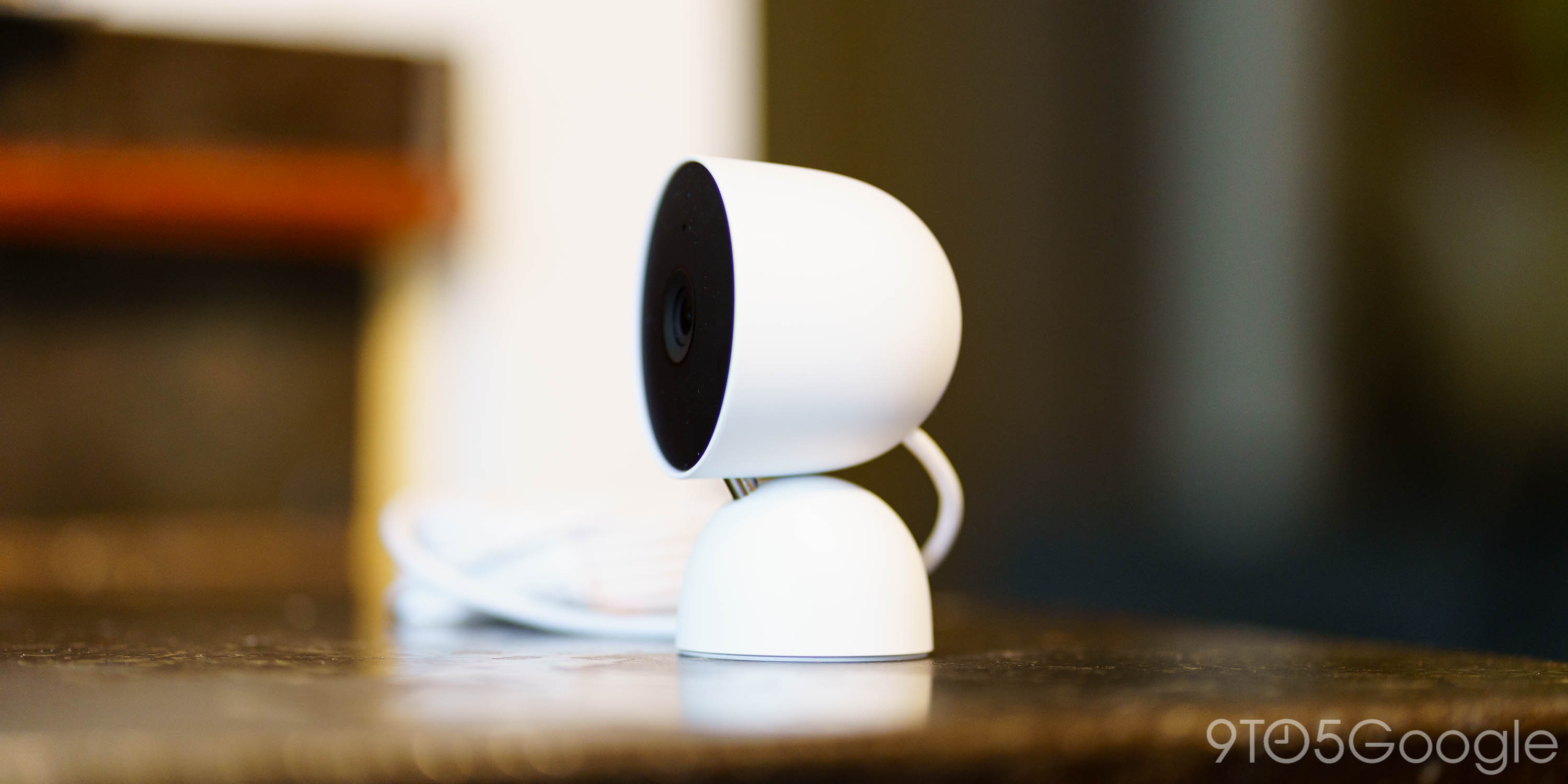
The new Nest Cam (wired) is available from Google in Snow White, Linen Gray, Fog Blue/Green, and Sand, with the last having a maple-wood base. Our review unit in Snow was provided by the firm, and I liked how it looked overall. It feels lot more understated compared to its older sibling from 2015 and even competing cameras from the likes of Arlo, Ring, and others, even though it doesn’t exactly blend in with my home’s decor. I believe Google is hands-down the design winner in this contest.

ARTFUL MOUNTING The mounting mechanism was arguably the best aspect of the design in my opinion. It only takes a minute or two to mount this camera because the bottom portion of the base flips off to reveal two screw holes. It’s a very well done arrangement, however I do wish the bottom of the mount was more accommodating to adhesive mounting techniques. Renters should also be able to mount.

Six years later, a sensor downgrade affects camera quality. Despite the excellent hardware surrounding it, one of the crucial components just isn’t up to par. The Nest Cam (wired2MP, )’s 135-degree FOV sensor falls well short of expectations. Compared to the 2015 model, it has a reduced resolution, which reduces the 6x optical zoom and the amount of detail in the image.
Technically speaking, the camera quality here is acceptable in a bubble. To see everything in the room that the camera is looking at, there is just barely enough detail in the image. This only truly becomes an issue when zooming in because it can be challenging to see smaller things farther away from the camera. Although there is a maximum quality level for recording, the difference is, at best, insignificant.
This product’s quality isn’t poor, but it’s a significant step down from the Nest Cam IQ and even the Nest Cam Indoor that it replaces.
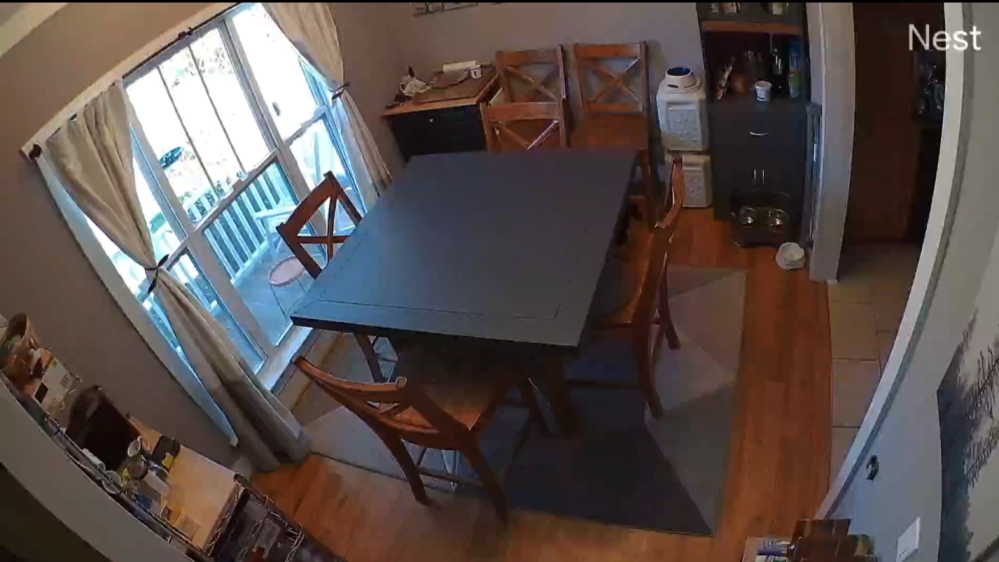
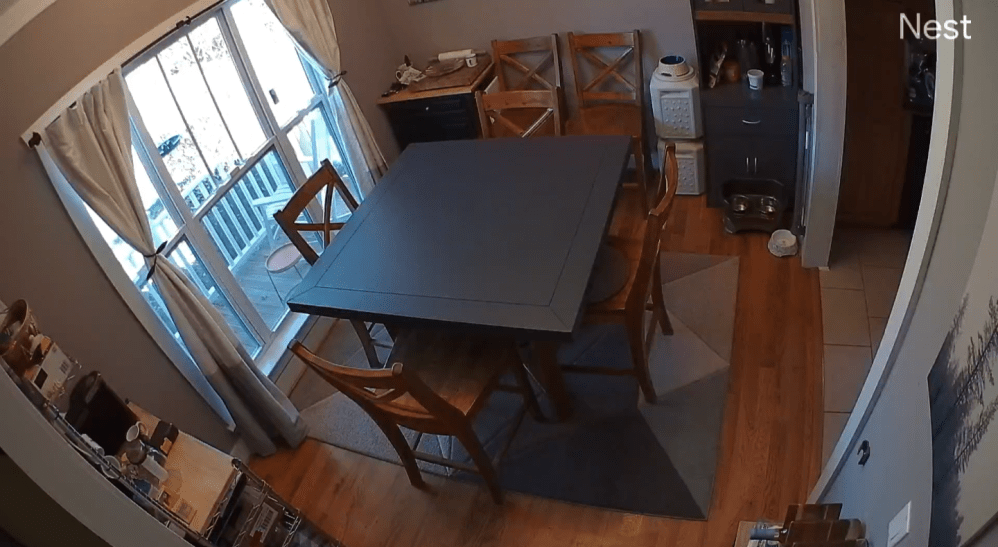
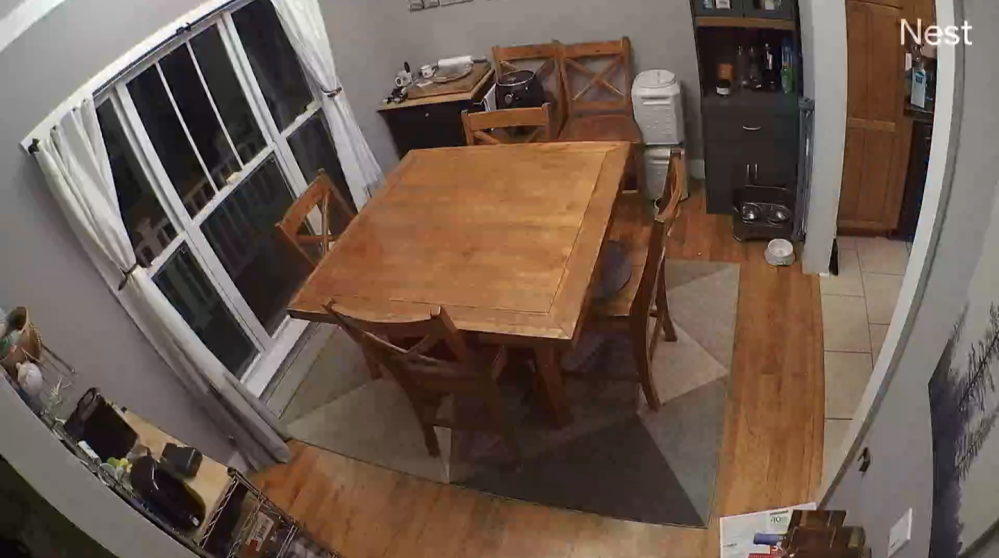
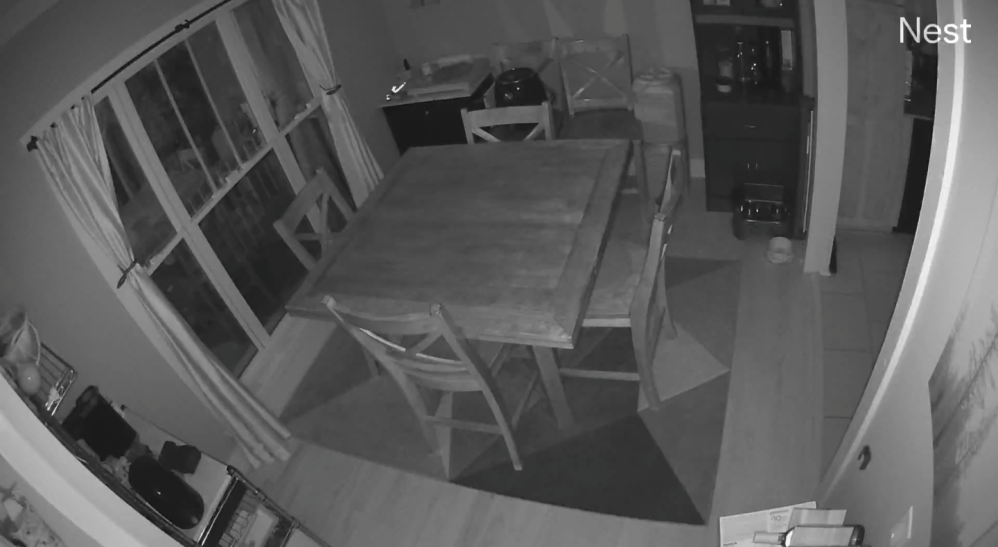
GOOGLES MUST PAY ATTENTION TO HDR How this camera handles HDR processing is the greater issue. As previously indicated, I placed the camera in my dining room, which is a space in my house with enormous windows that take up virtually the entire wall. If the windows were visible, this proved to be extremely challenging for the camera to handle, especially on a sunny day. Absolutely blown up highlights caused the room’s shadows to make it difficult to see details. These are the outcomes I would anticipate from a cheap camera, not one that costs just under $100.
I have no doubt that Google will address this in next software upgrades. As a result, even though they are currently in a different department, the capabilities are undoubtedly there. After all, we are discussing the same firm that performs magic on its Pixel smartphone cameras.

On the plus side, neither of these problems appeared to impede night vision. The IR-based system maintained a room well-illuminated, and even in black and white, I could make things out easily. However, I wish Google had incorporated the more recent night vision technology that enables color pictures at night.
SOFTWARE ONE GOOGLE IS NOT FIXING THE HOME APP FAST ENOUGH, AND IT IS STILL A MESS. To get right to the point, the app required to operate Google’s new camera is without a doubt its greatest shortcoming. The Google Home app has many brilliant ideas, but it falls far short of the old Nest app’s excellent focus in handling the Nest portfolio. Instead, it’s disorganized and incomplete, which might equally well serve as the Home app’s tagline.
The Google Home app is simply not as effective at doing its job as the Nest app was, and you cannot utilize this new camera or any of Google’s most recent Nest devices in any capacity with that older software. We went into much more detail on this in our review of the $179 Nest Cam (battery).
The new Nest Cam (wired) can display a live feed, scroll through history, change settings, and be turned on and off through the Home app. In Google Assistant routines, such as the Home/Away routines, the camera can also be used. But the polish and fit just aren’t there. For instance, the new Nest Cam cannot be scheduled, rendering it virtually worthless in many areas of my house. I don’t like how Google handles privacy, but it doesn’t change the fact that I don’t want cameras in the areas of my house I use during the day. Regardless of whether someone is home or not, I have a daily plan that makes sure the camera turns on at night, and the Nest applications Away routine makes sure the camera turns on when I leave to satisfy that need with older cameras. I cannot duplicate that feature in the current arrangement at all, therefore for the foreseeable future, I won’t be replacing the majority of the cameras in my house.
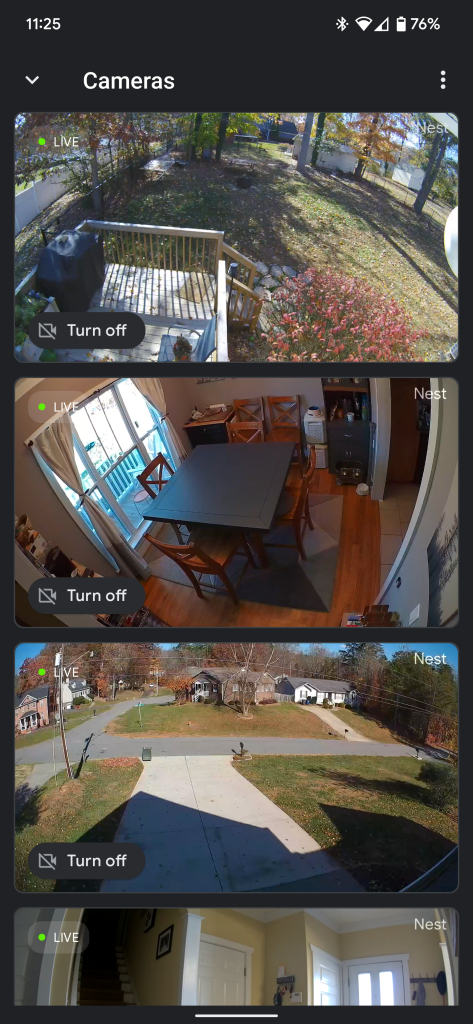

0

1

2
But there are also more fundamental problems. When enabling 24/7 recording, Google’s new History view loads marked clips and random points in time much more slowly. On numerous occasions, the program just gave up on trying to load a clip, only to resume operation for the same task a short while later. Additionally, the new history view won’t provide a live preview as you navigate through history, which significantly reduces its usefulness. This camera was mostly used to monitor our dining room, where our dogs like to curl up when we leave the house. This camera was far less useful for that duty than prior models because it couldn’t search history quickly.
Other long-standing functions, such as the ability to share a stream with others or connection with Alexa, are also broken when switching from the Nest app to the Home app. But I don’t think these defeats are game-changers. It’s not like Amazon’s cameras reciprocate the favor Nest extended for years, especially with the latter.
However, when it comes to the new Nest cameras, these problems only begin to scratch the surface of what’s wrong with the Google Home app. The settings are disorganized and difficult to use, feeds frequently take a long time to load, clips cannot be saved to your account or manually generated, and there are many more issues, but the major issue is how long it has taken Google to address these issues. New Nest cameras have been available for purchase for more than three months as of the publication of this article, and Google hasn’t yet addressed any of the problems we’ve previously discussed. Even while I’m confident that everything will be fixed in due course, the fact that Google is moving so slowly in this ecosystem actually makes me regret investing my own money in it. Although blog postings that discuss commitment and the future are fantastic, they are meaningless without action.
There is no justification for how unprepared the Home app was for these new cameras because, once again, Google had years to prepare. No one should be forced to purchase a product on the promise of future fixes.
A SLOW APP PREVENTS QUICK NOTIFICATIONS When it detects motion, people, or other objects, the Nest Cam (wired), like the majority of smart home cameras, will send notifications to your phone. In my experience over the previous few months, notifications arrive quite quickly, but the app significantly slows that down. I’ll receive a notification as soon as something happens, but it won’t show a photo preview right away. Even when I click the notification to open the app and view the clip, I frequently get a message stating that the clip isn’t yet ready.

3

4
Because Google’s brilliant new on-device processing recognizes objects immediately on the camera’s local computer rather than utilizing AI on Google’s servers to evaluate the data, the notifications are extremely quick. The new Nest Cam Indoor truly does a terrific job of making that process as quick as possible; I never found that the older Nest Cam Indoor was particularly slow at this task.
A BETTER EXPERIENCE IS LOCAL BACKUP WITH CLOUD STORAGE. Despite the drawbacks, there have been positive developments in recent years as well. For instance, I believe Google still has an advantage over rivals in terms of its software. Despite taking a significant step back from the Nest app, the Google Home app is still superior to many rivals. Although the Home app lacks focus, it is more organized than, for example, the Arlos app.
Another thing that helps is the nature of cloud storage, which is usually quicker for viewing history than using an app to connect to a server, only for the server to talk back to your camera, which is using local storage, and vice versa. The drawback of that is that it’s becoming more and more likely that server outages or internet issues may render your camera useless for security. Google has thankfully corrected that.
Limited local storage is included into the hardware of the Nest Cam (wired). No microSD card or other type of additional storage is required because it is always available. When the connection is restored, the on-board storage will resume recording for up to an hour continuously and transfer the video to your account. Given that my local ISP has been giving me frequent internet issues, I really found this component to be rather helpful. I no longer notice gaps as I look back in time.

5
Yes, using a microSD card for local storage provides a lot of benefits on its own. The video may be analyzed on a computer, more can be stored offline, and the camera is fully subscription-free. However, I’ve always discovered that cameras with microSD storage suffer from poor use. For instance, Google’s is far faster than TP-Kasa Link’s series when it comes to retrieving camera history. Local storage is fantastic, but Google’s software is what actually makes it valuable.
YOU MUST BE NESTAWARE The most crucial fact about Google’s cameras may be that you really need to sign up for Nest Aware for them to be useful. The Nest Cam (wired) is only able to record video for three hours without a paid subscription. This is a continuous restriction, so even if the camera records a tape at one in the morning, it won’t be available when you wake up. It’s a better deal than what rival cameras, like Arlos Systems, give away for free, but it’s not all that helpful.
With Nest Aware, which adds smarter alerts and expands recording history to 60 days (10 days event-based), prices start at $6 per month or $12 per month, depending on the tier. This includes facial detection, which on this hardware performs pretty well.
If you plan to purchase this camera, you will need the subscription to use it to its full potential. Whether or not it is okay for a $99 camera to require a monthly subscription is a discussion for another day.

6
LAST THOUGHTS The purchase of a Nest camera should be a no-brainer for many people. It should be simple to recommend something with strong Google Assistant integration, a respected firm behind it, and a release that has been six years in the making. But the finished item simply isn’t.
Despite their age and cost, older Nest Cams were a rather straightforward recommendation. Although the video quality wasn’t precisely the finest in the industry, it did the job extremely well and the software in general was superior to most rivals. Though the gap is narrowing and a $50 price differential is becoming more difficult to justify, I still believe that this latest generation has a tiny advantage in terms of software speed and general reliability. The new Nest Cam is undoubtedly for some people, but it will no longer be considered the industry standard. Instead, it’s simply filling the ecology of Google, a niche that isn’t being filled by others.

7
In my opinion, Google’s new indoor Nest Cam is a good buy when it is on sale for around $70, which has already happened a few times (keep close to 9to5Toys ) and is the case as we are pushing this review. It becomes much more appealing with the addition of backup storage for internet or server outages, and the adaptable new design is a fantastic upgrade from the original Dropcam concept. But there are limitations. The three-hour time limit is better than nothing, but renders the camera useless for security purposes, so don’t waste your time trying to use it without a subscription. Your present configuration is also significant. If you currently own a Nest Cam from an earlier generation, the new model creates a chaotic ecosystem.
WHERE CAN I GET A NEST CAM (WIRED) FTC: We employ automatically earning affiliate connections. More.
Check out 9to5Google on YouTube for more news:







